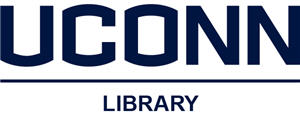Document Type
Article
Disciplines
Life Sciences
Abstract
The unifying structural characteristic of members of the bacterial order Thermotogales is their toga, an unusual cell envelope that includes a loose-fitting sheath around each cell. Only two toga-associated structural proteins have been purified and characterized in Thermotoga maritima: the anchor protein OmpA1 (or Ompα) and the porin OmpB (or Ompβ). The gene encoding OmpA1 (ompA1) was cloned and sequenced and later assigned to TM0477 in the genome sequence, but because no peptide sequence was available for OmpB, its gene (ompB) was not annotated. We identified six porin candidates in the genome sequence of T. maritima. Of these candidates, only one, encoded by TM0476, has all the characteristics reported for OmpB and characteristics expected of a porin including predominant β-sheet structure, a carboxy terminus porin anchoring motif, and a porin-specific amino acid composition. We highly enriched a toga fraction of cells for OmpB by sucrose gradient centrifugation and hydroxyapatite chromatography and analyzed it by LC/MS/MS. We found that the only porin candidate that it contained was the TM0476 product. This cell fraction also had β-sheet character as determined by circular dichroism, consistent with its enrichment for OmpB. We conclude that TM0476 encodes OmpB. A phylogenetic analysis of OmpB found orthologs encoded in syntenic locations in the genomes of all but two Thermotogales species. Those without orthologs have putative isofunctional genes in their place. Phylogenetic analyses of OmpA1 revealed that each species of the Thermotogales has one or two OmpA homologs. T. maritima has two OmpA homologs, encoded by ompA1 (TM0477) and ompA2 (TM1729), both of which were found in the toga protein-enriched cell extracts. These annotations of the genes encoding toga structural proteins will guide future examinations of the structure and function of this unusual lineage-defining cell sheath.
Recommended Citation
Petrus, Amanda K.; Swithers, Kristen S.; Gogarten, J. Peter; Ranjit, Chaman; and Noll, Kenneth M., "Genes for the Major Structural Components of Thermotogales Species’ Togas Revealed by Proteomic and Evolutionary Analyses of OmpA and OmpB Homologs" (2012). Open Access Author Fund Awardees' Articles. 3.
https://digitalcommons.lib.uconn.edu/libr_oa/3



Comments
Originally published in :
PLoS ONE 7(6): e40236. doi:10.1371/journal.pone.0040236 Copyright: 2012 Petrus et al. This is an open-access article distributed under the terms of the Creative Commons Attribution License, which permits unrestricted use, distribution, and reproduction in any medium, provided the original author and source are credited.